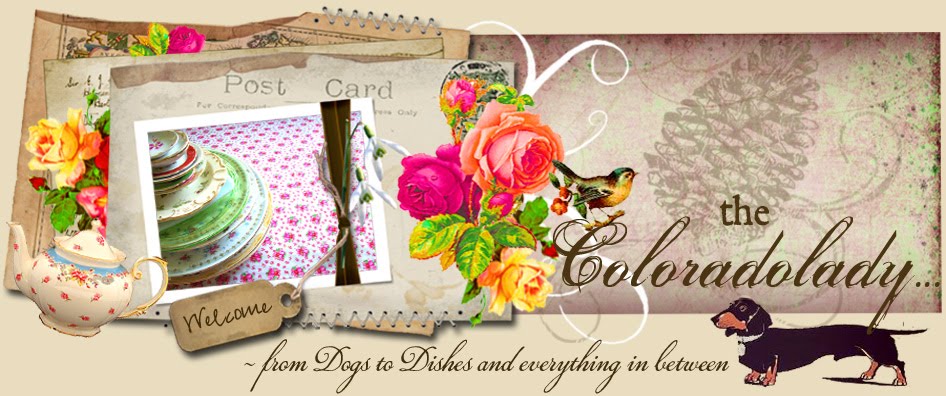I have cleaned hundreds of linens using this method and I'd say 90% of the time, they turn out good as new. There have unfortunately been a few times when I have damaged some of the original cloth in old dresser scarves due to the fact that the piece had been folded for so many years that the fabrics were just too fragile at the fold lines and I did not realize that in time.
I did not trash these, as the work is still wonderful, I use these "accidental" pieces to maybe re-purpose them in the future. I'd say that this type of thing has happened maybe less than 5% of the time. So please, take what I have to share with you here and just be aware nothing is ever 100%.....but this is darn near!
You will need: White Vinegar, Biz and Oxi-clean. (sometimes, I have a hard time finding the Biz, and have to check several stores to find it. My local grocer will order this if I ask, so keep that in mind if you have a hard time finding it near you.)
You will use:
Per gallon of water
1 scoop of Oxi-clean
1 scoop of Biz (Use the Oxi-clean scoop, not the scoop in the Biz) If you are mixing up 4 gallons of water, like I did here, you will need to use this recipe times 4 for it to be the correct mixture:
For example:
4 gallons of water
4 scoops of Oxi-Clean
4 scoops of Biz - using the Oxi-Clean scoop
In my original post, I was heating the water on the stove so it was very warm. I still do that if I am cleaning mostly WHITE linens. I do not boil the water, I just heat it till it is hotter than from the tap. If I have several colored pieces, I just use the hot tap water. You can do this in the sink as well. Here I have them in a bucket.
My original post stated I usually soaked these for 24-48 hours. I have since stopped doing that. If the whites are really soiled and dirty, then yes, I do soak them up to 24 hours. But, I check on them and make sure they are not already clean and just sitting in the solution. I have found you really only need to soak these until they are clean.
For quilts......I run almost luke warm...NOT HOT water in the bathtub. Due to the colors in the quilts, I never use hot water. I add the soaps and usually mix it up times 5 for a half tub of water. (Pay no attention to the dirty tub....it was going to be cleaned, but decided to soak this quilt first...then clean) Yes, I sometimes have a dirty tub, with a son who works in a messy job some weeks, I don't get to it too quick.....just keepin it truthful!
The colored water is the gunk being pulled from the fabrics. All that yellow discoloration you find in vintage linens...this is what is in the water. I usually let these quilts soak for maybe an hour or so. I check on it and if the water is REALLY dirty, I drain and repeat for about another half hour. Handle the quilt very gently.
This is a vintage apron I soaked in the sink. It washed up really well, with just a few spots that would not come out.
Once the quilt has soaked well, I rinse gently in the tub and hand wring. Then I wash it in the washer on gentle cycle with a very mild detergent. I add about a cup of vinegar to the rinse water and run it through the rinse cycle twice. The key is to get ALL the soaps out of the quilt and any vintage linens.
This is a picture of linens I had rinsed ( I thought well) before I added the vinegar, and once I added that, you can see there was still soap in the fabrics.
And as always, I love to hang all my vintage quilts and linens out in the sun to dry. HERE is another quilt once it was cleaned. See the pretty white blocks? They were as yellow as yellow could be, it looked like the blocks were a sand color. Now, back to the original bright colors. This particular quilt once it was washed pulled a bit where the binding was sewn onto the quilt. I just restitched it by hand and it was as good as new. I have never had that happen with any other quilt, just this one and it was easily repaired. Once your quilt is dry, you can toss it in the dryer for a quick fluffing.
I hope that answers any questions you may have. If a piece has rust spots, this solution does not take the rust spots out...only the discolored yellow and most stains other than rust. There are rust removers you can purchase and I have been told that works well, but I have not tried it. For me, if I can get the piece back to the original white and bright colors, that is enough for me.
Good luck with this, and if you are as nervous and I was when I started using this solution, just start out with a small piece and work your way up to something larger, that is what I did. After I discovered I was not going to ruin my treasures, I tackled a quilt and it worked wonderfully.
I always use this same solution to soak and clean vintage sheets. I have a stack of vintage sheets waiting to be transformed into a quilt. The first thing I do when I bring them home is fill the tub and soak them before I wash them in the washer. Then line dry. They clean up so pretty I think and really makes them look fresh as new.
I guess you could say, I have a great love for vintage linens, but have a hard time bringing them home without cleaning them up right away. And when the process is as easy as this one....that makes it all the better!
I am linking in today with Smiling Sally, for Blue Monday...as I think it qualifies...lots of BLUE in this post!

























































































Great tips!
ReplyDeleteMy Blue Monday.
Thanks for the re-post! Well done!
ReplyDeleteThank you, thank you. I was one of those who asked you how to do this. I really appreciate the advice. We inherited a quilt that was my husband's when he was a child. It has some stains on it that prevent me from using it as I would like to. Maybe this will be the remedy! Thanks again.
ReplyDeleteKaren
Ladybug Creek
thanks for sharing-i'm always curious as to the best way to clean vintage fabrics...and thanks for stopping by :)
ReplyDeleteThis is a great post. I have purchased several vintage linens over the past few months so I really appreciate the great tips.
ReplyDeleteJane
Your instructions are so clear. Thanks for the tutorial. I remember when you first posted it. I've never seen any other tips on how to properly clean vintage items, so you're filling a real need.
ReplyDeleteHappy Blue Monday, Suzanne.
Many, many thanks for the tutorial!
ReplyDeleteThanks bunches Suzanne. I bought several antique linens this weekend, Now must find Biz.
ReplyDeletehugs ♥ olive
It does work. I have not tried a quilt as I do not think I have the strength to handle a wet one. It was a nice surprise to find you among the blue Monday group. Stay cool.
ReplyDeleteThank you for your tutorial. I have so many linens and am always afraid to wash them. I am going to try this on them. Some are so delicate that it makes me very nervous to even think of cleaning them.
ReplyDeleteThanks so much Suzanne! I'm going to use these tips!!
ReplyDeleteLove,
Susan and Bentley
xxoo
Thank you so much for sharing you expertise and cleaning solutions. I have some vintage linens I will be brave and clean. I need to find some Biz!
ReplyDeleteGreat tips!
ReplyDeleteI need to use this method on some of the old tablecloths I have.
ReplyDeleteGREAT post!!! I will totally be using this future reference and am kicking myself for not getting this adorable vintage table cloth I saw that had a stain.
ReplyDeleteXOXO
Thanks for the post! I've been using just Biz all summer on the vintage linens I've been finding and it has worked well enough on its own to get every spot out of every tablecloth I've found! I can't say enough good about it!
ReplyDeleteThank you, thank you, thank you!!
ReplyDeleteHave a wonderful day and HaPpY bLuE mOnDaY!!!
Sarah
Thanks for the tutorial. I'm going to try this. I just recently bought some linen tablecloths at an estate sale and was not sure what to do with them as they had a few small stains.
ReplyDeleteThank you so much for this post. I have some old tablecloths that need a good cleaning. I cleaned them in Woolite when I brought them home and they've been sitting in a drawer ever since. I will try this to get them looking better.
ReplyDeleteHey, Suzanne! Just a word of warning...This technique does not work well in a front load washer. I think it is because it uses less water. Even on delicate, the "agitation" was too much for some of the weaker fabrics...
ReplyDeletewhat great info...i'm going to put this recipe into my file~ i'm always wondering how to best clean these delicate old pieces.
ReplyDeletethanks!!
chas
Thank YOU!
ReplyDeleteThanks for the tips! I have several vintage quilts and other linens but have been afraid to clean them!
ReplyDeleteHi Suzanne,
ReplyDeletethanks for sharing these great tips with us. The quilt came out beautiful!
Debbie
Thanks for the tutorial. I do a lot of washing of vintage linens and use a similar process. Only I use the washing machine and just OxiClean. I have a top loader and dissolve (agitate) 4 or 5 scoops of OxiClean and a scoop of detergent using the hot water setting, usually setting the machine to medium amount of water. Then add the linens and agitate until they're fully wet. Then I soak for 12 hours or so or over night. With soaking over, I run the machine on the delicate cycle. (OxiClean says on the package that soaking past 6 hours won't be too helpful but it's easier to leave in over night). Sometimes I'll do an extra rinse. When the entire cycle is done, I spin again on high to get the most moisture out as possible. Lacy or loopy linens go in a mesh bag for the entire process so they don't get caught on the agitator. Really fragile looking fabric is done by hand in a bucket.
ReplyDeleteYou're right, sometimes tears or rips occur. This usually means the fabric had already been weakened by exposure to moisture from bad storage like in a basement. But I've been able to take brown stained huck towels and damask napkins and tablecloths and make them white again.
I find pillowcases often need a second soaking because of all the residual hair oil accumulated and turned yellow over the years. Yuck. I've also learned the hard way to check for colorfastness prior to throwing anything that might run in the washer. Old Chinese linen with applique designs and anything with embroidery are my most likely suspects.
I've been told that with old, musty smelling quilts, that soaking in vinegar will rid out the smell. But I've never learned the proportion of vinegar to water. And I imagine you'd have to rinse like crazy to get the vinegar and it's smell out.
Thanks again. I very much enjoy your blog.